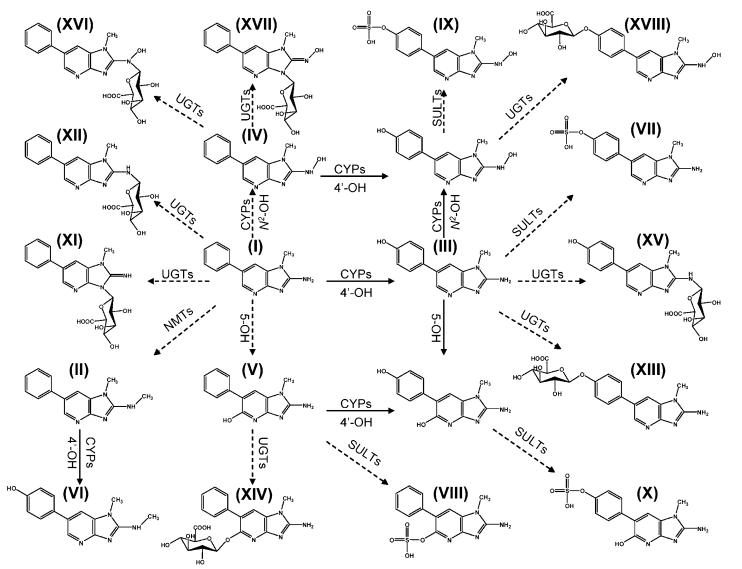Figure 3.
Major in vivo PhIP metabolism pathways. Both oxidation and conjugation metabolizing enzymes convert PhIP (I), collectively or separately, into 17 structurally diversified metabolites. CYP-dependent or -independent oxidation reactions at N2, C5, and C4′ positions transform PhIP to three monohydroxylated metabolites (III-V), which can be further metabolized to two dihydroxylated metabolites. Besides catalyzing direct N-conjugation of PhIP (I) to metabolites XI and XII, UDP-glucuronosyltransferases (UGTs) can also convert oxidized metabolites into glucuronides (XIII, XIV, XV, XVI, XVII, and XVIII). Cytosolic sulfotransferases (SULTs) can metabolize oxidized metabolites to sulfates (VII, VIII, IX, and X), and N-methyltransferases (NMTs) can form more hydrophobic metabolite II, which can be further metabolized to metabolite VI. Solid lines represent oxidation reactions, and dashed lines represent conjugation reactions.

